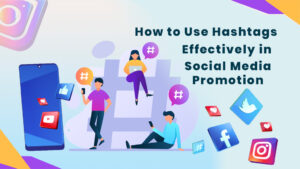In today’s digital age, influencer marketing has emerged as a powerful strategy for brands to connect with their target audiences in authentic and impactful ways. From social media personalities to niche bloggers and industry experts, influencers wield significant influence over consumer purchasing decisions and brand perceptions. In this article, we’ll delve into the evolution of influencer marketing, its effectiveness, and best practices for harnessing its power.
The Rise of Influencer Marketing
Influencer marketing has undergone a remarkable transformation in recent years, evolving from a niche tactic to a mainstream marketing strategy embraced by brands of all sizes. The proliferation of social media platforms like Instagram, YouTube, TikTok, and Twitch has democratized influence, allowing individuals to amass large followings based on their expertise, creativity, or relatability.
Why Influencer Marketing Works
At its core, influencer marketing works because it leverages the principles of trust, authenticity, and relevance. Unlike traditional advertising, where brand messages are often perceived as intrusive or inauthentic, influencer marketing feels more like a recommendation from a trusted friend or peer. Audiences are more receptive to product recommendations and endorsements when they come from someone they admire and trust.
Types of Influencers
Influencers come in various shapes and sizes, each catering to different niches and demographics. Macro-influencers, with hundreds of thousands or even millions of followers, often have broad appeal and reach. Micro-influencers, on the other hand, have smaller but highly engaged audiences within specific niches. Nano-influencers, with typically fewer than 10,000 followers, often have the most authentic connections with their audiences.
The Impact of Influencer Marketing
The impact of influencer marketing extends beyond brand awareness and reach. Studies have shown that influencer recommendations can drive purchase intent, increase website traffic, and boost sales conversions. Moreover, influencer-generated content often outperforms branded content in terms of engagement and authenticity, resonating more deeply with audiences.
Best Practices for Influencer Marketing
While influencer marketing can be highly effective, it requires careful planning and execution to achieve desired results. Here are some best practices to consider:
Identify the Right Influencers: Choose influencers whose values, audience demographics, and content align with your brand objectives.
Build Genuine Relationships: Cultivate authentic relationships with influencers based on mutual respect and collaboration, rather than transactional exchanges.
Set Clear Objectives: Define specific goals for your influencer campaigns, whether it’s driving sales, increasing brand awareness, or generating user-generated content.
Provide Creative Freedom: Empower influencers to create content that resonates with their audience while staying true to your brand guidelines and messaging.
Measure and Analyze Results: Use key performance indicators (KPIs) such as engagement rate, click-through rate, and return on investment (ROI) to evaluate the effectiveness of your influencer campaigns.
Conclusion
Influencer marketing has become a cornerstone of modern digital marketing, offering brands unparalleled opportunities to connect with consumers in meaningful ways. By partnering with influencers who authentically represent their values and resonate with their target audience, brands can leverage the power of influence to drive brand affinity, engagement, and ultimately, business growth in today’s competitive landscape.
Website: https://onlineinfatuation.com/blog/




